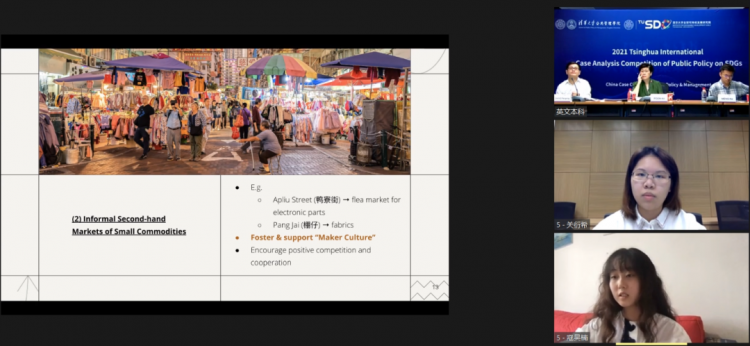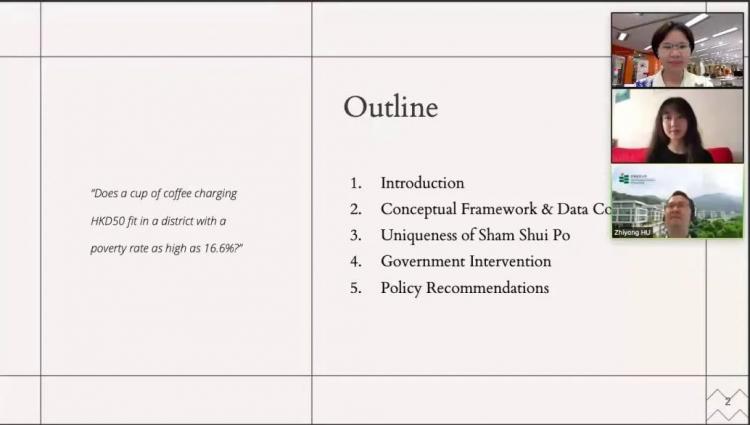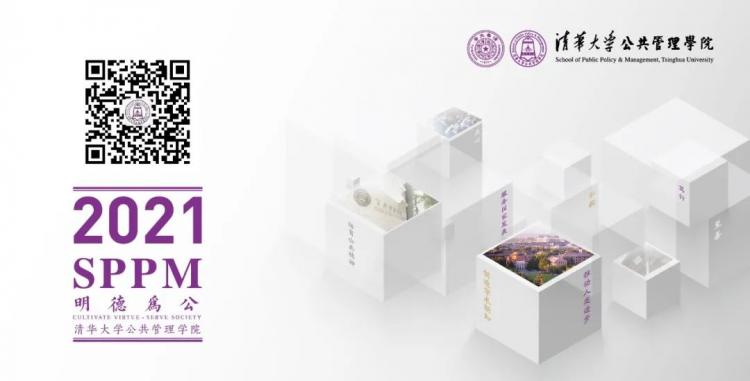获奖案例分享丨“深水埗就是新的布鲁克林”:新兴文化产业与原有社区能否共存?

2021年清华大学全球可持续发展目标公共政策案例分析大赛(2021 Tsinghua International Case Analysis Competition of Public Policy on SDGs)由清华大学公共管理学院中国公共管理案例中心和清华大学全球可持续发展研究院共同主办,于今年4月-8月顺利举行,吸引了来自中国、美国、英国、瑞士、新加坡、爱尔兰、澳大利亚、德国的53所院校49支队伍共147人报名。参赛队伍围绕17项联合国可持续发展目标进行选题,从公共政策专业角度思考可持续发展议题,开展实地调研、线上访谈并精心撰写案例分析报告。由Eruri团队创作的《“Sham Shui Po Is the New Brooklyn”: Could New Cultural Industry and the Original Community Coexist?》获得本次大赛本科生组一等奖。
案例作者
Author
Guan Yanxi, The Education University of Hong Kong
Kou Wunan, New York University
指导教师
Advisor
Dr Fox Hu Zhiyong, Associate Professor of the Department of Asian and Policy Studies at The Education University of Hong Kong
关键词
Keywords
Urban Redevelopment; Hong Kong; Cultural Industry; Gentrification
案例简介
Case Overview
What is it like to appreciate artworks in the slums of a global city? In recent years, many creative youths have seeded their dreams of buoyant cultures and arts in Sham Shui Po - the hottest Instagram-worthy location in Hong Kong with cropping-up art spaces, cafes, and boutiques, but also the poorest district with the lowest cost of living that enables the underprivileged with diverse cultural and ethnic background to take shelter. Sham Shui Po used to tell no skyscrapers and extravagance but merely street hawkers and life struggles, but as a growing number of newcomers appreciate its vibrance and add zest to the district’s name, people are worried about the replacement of original residents and businesses and the loss of authentic identity and local character. This case study tries to explore the possibilities of the government’s role in culture-led gentrification. Could the new cultural industry and the original community coexist?
参赛经验分享
Experience Sharing
When seeking to explore an on-going neighbourhood transformation, setting foot onto the field is the crucial step for one to grasp the subtle changes. Before we conducted the actual field visits to Sham Shui Po, major efforts and time were invested into documenting the neighbourhood reorderings in past years via literature and in-depth interviews with local stakeholders and scholars. The then field visits not only served as an empirical source to calibrate and refine the data gathered but provided us a direct picture of the community which we could have never discovered on paper. The complexities arising from interest conflicts among various concerned parties were indeed surging. However, the most enchanting part lied in the human touches that bonded the original residents and newcomers who jointly fostered an organic and harmonious relation rejuvenated the neighbourhood at a measured pace.
The research process was not smooth as practical constraints always emerged and adjustments were thus required to take place constantly. For example, the case study was initially designed to be investigated upon quantitative data and eventually landed on a qualitative data basis. As mentioned above, numbers were too frigid to reflect the humanity components in the case. In order to present a representative and authentic case study, one needs to work hard adopting flexibilities and riding the wave, but isn’t that exactly the fun of doing research?
We greatly appreciate the chance to take part in the 2021 Tsinghua International Case Analysis Competition of Public Policy on SDGs. Not only did it encourage us to contemplate the issues we care about, but also provide a platform for communication. It’s truly invaluable to learn from our peers’ findings as well as the review committee’s comments. We will press on, with the lofty end, in mind that one day our research would be more than paper talk but a contribution to society.


“Eruri”团队参加决赛
供稿丨案例中心

(本文转载自 ,如有侵权请电话联系13810995524)
* 文章为作者独立观点,不代表MBAChina立场。采编部邮箱:news@mbachina.com,欢迎交流与合作。
热门推荐
备考交流
最新动态
- 清华大学-香港城市大学MPA-EMBA项目2023年毕业活动成功举行 2023-07-03
- 清华大学2024年公共管理硕士(MPA双证)研究生招生通知 2023-04-20
- 首届中国数字经济发展和治理学术年会演讲精粹系列二 数字时代的经济发展与学科建设 2023-03-01
活动日历
- 01月
- 02月
- 03月
- 04月
- 05月
- 06月
- 07月
- 08月
- 09月
- 10月
- 11月
- 12月
- 05/04 报名 | “中国经济变局下的企业风险管理”复旦大学李若山教授公开课暨联合宣讲会
- 05/08 集赞赢取精美礼品 | 面试诀窍、备考经历、海外交换,报名5月8日面试圆桌派,用10个问题揭秘三位高分学长的备考秘籍!
- 05/12 招生工作|浙工大校园开放日暨MBA、MEM项目宣讲会通知
- 05/12 「复旦大学 EMBA 项目」与「复旦-台大 EMBA 项目」介绍会 | 活动预告
- 05/17 限时抢位!长江商学院MBA项目5月北京体验课
- 05/18 5月18日 | 全国首场中国商学院招生巡展暨2025招生政策发布会(北京站)重磅来袭!
- 05/18 5月18日 | 北京体育大学邀您参加中国商学院招生巡展暨2025招生政策发布会(北京站)
- 05/18 5月18日 | 中国矿业大学(北京)邀您参加中国商学院招生巡展暨2025招生政策发布会(北京站)
- 05/18 5月18日 | 北京师范大学邀您参加中国商学院招生巡展暨2025招生政策发布会(北京站)
- 05/18 5月18日 | 天津大学邀您参加中国商学院招生巡展暨2025招生政策发布会(北京站)
热门资讯
MBA院校号
-
最新动态:
考研倒计时2天|心之所向皆如愿














